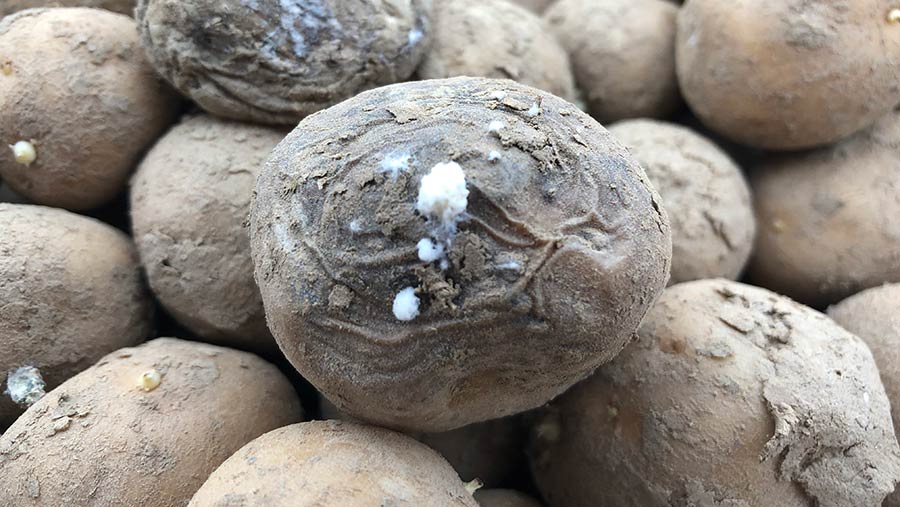Growers warned early seed potato harvest raises dry rot risk
 © Certis
© Certis Seed potato growers are being warned about the higher risk of dry rot this season, as the Scottish harvest begins a fortnight ahead of normal.
According to the AHDB, the disease is the most important fungal rot of potatoes in Great Britain and planting infected seed next spring can lead to gappy crops.
See also: Tips on making arable soils more resilient to extreme weather
It can be more of a problem on susceptible varieties following an early harvest, warns Stuart Wale, a consultant at Scotland’s Rural College (SRUC).
Poor skin set, warm tubers, and store condensation all increase dry rot risk.
He says one way to minimise the risk is by treating the crop with a fungicide when going into storage or at grading.
“Judging the need for treatment should be based on varietal susceptibility to the disease, previous experience of disease on a specific variety, and presence of the disease in the seed from which the crop was grown.”
Treatments
There are two fungicide options in this situation: Gavel (imazalil) and Storite Excel (thiabendazole) which can be used alone or in mixture.
Dr Wale points out that Fusarium sulphureum – one pathogen that causes dry rot – has been found to develop resistance to thiabendazole, whereas there has been almost no resistance detected to imazalil.
Gavel is marketed by Certis and the company’s technical manager Laurence Power says that for the past two springs dry rot has been a contributory factor in the gappy emergence of ware crops.
“For maximum disease reduction in storage, Gavel should be applied as soon as possible after harvest, preferably within 48 hours,” he says.
A full list of varietal susceptibilities to dry rot can be viewed at the AHDB’s online potato database.

